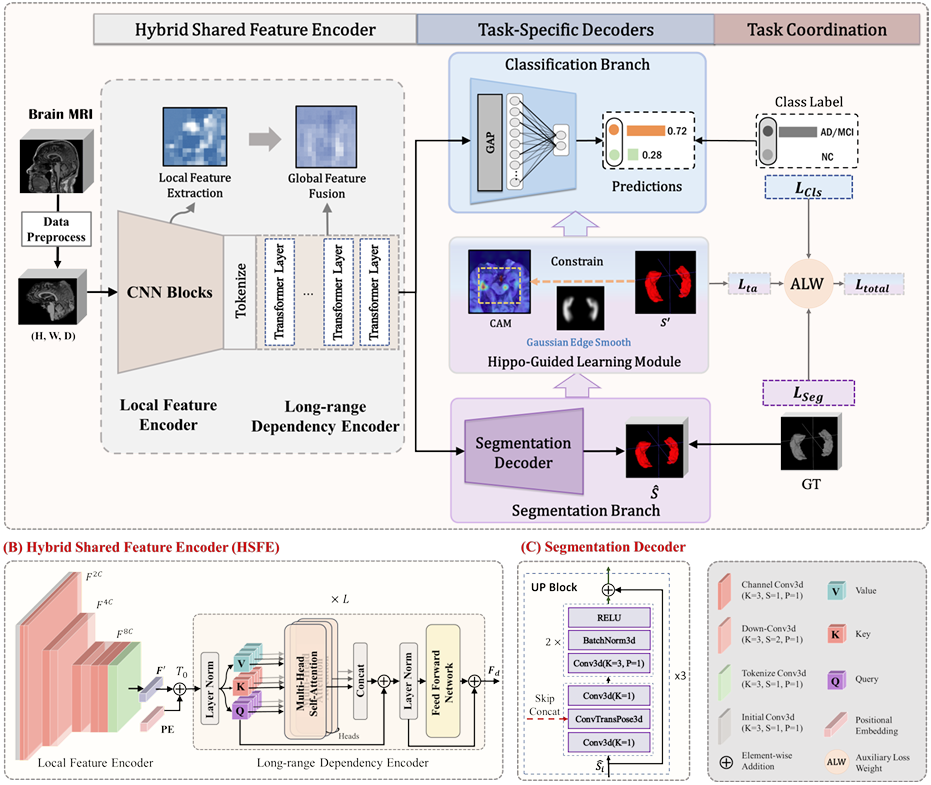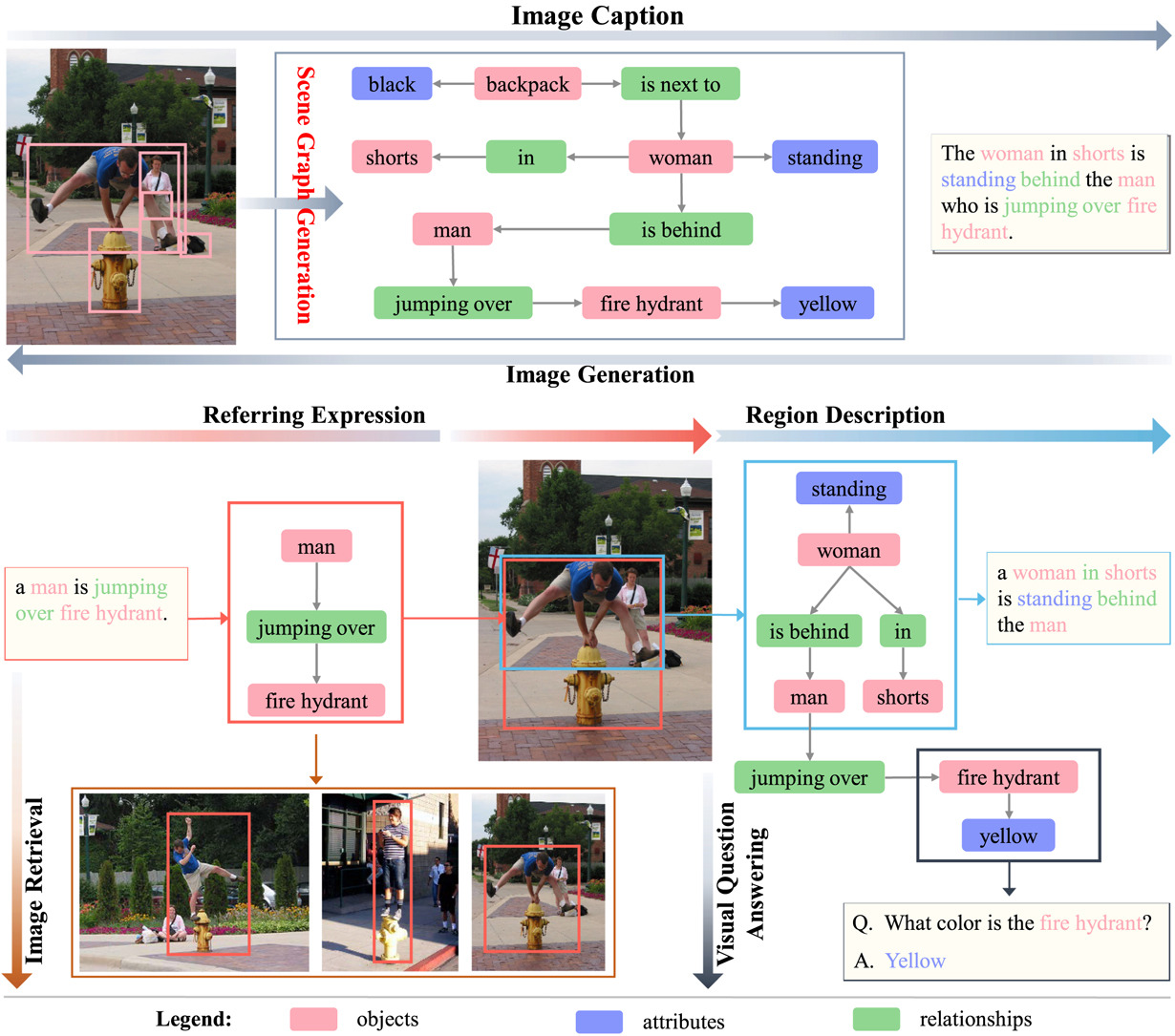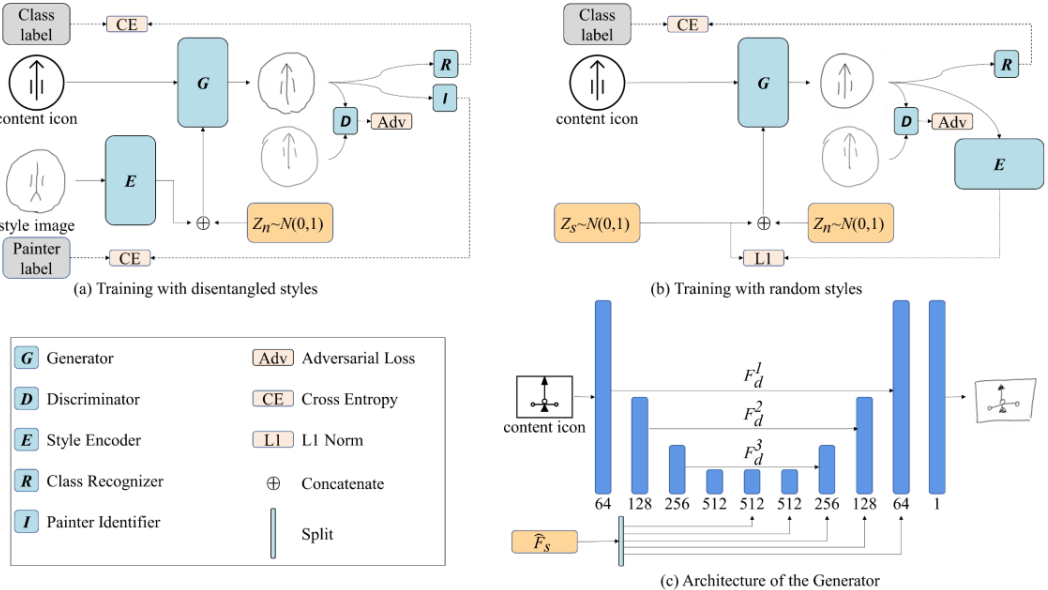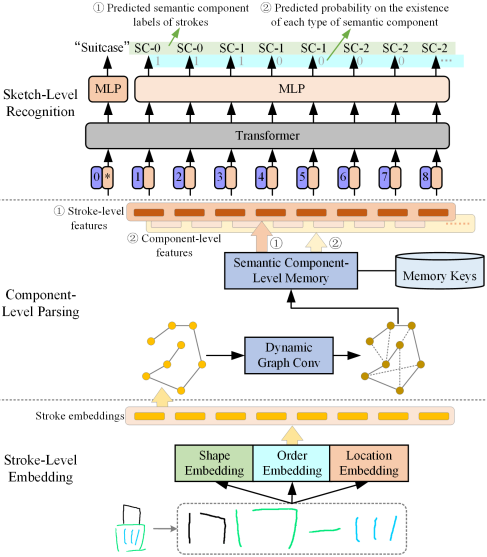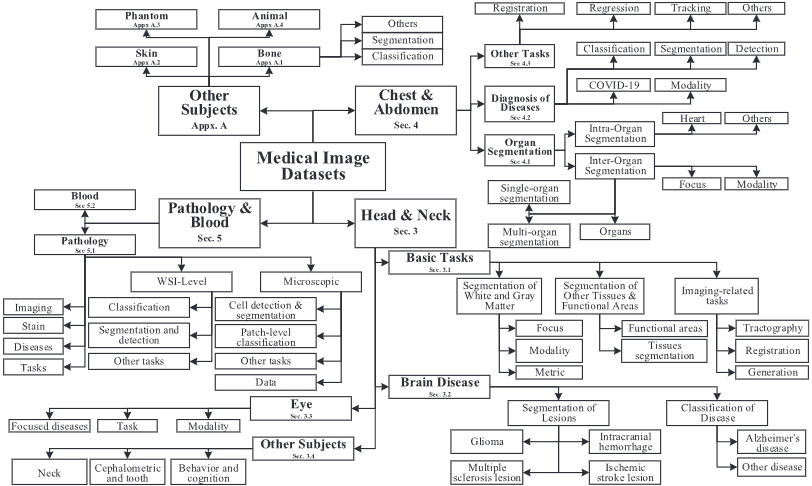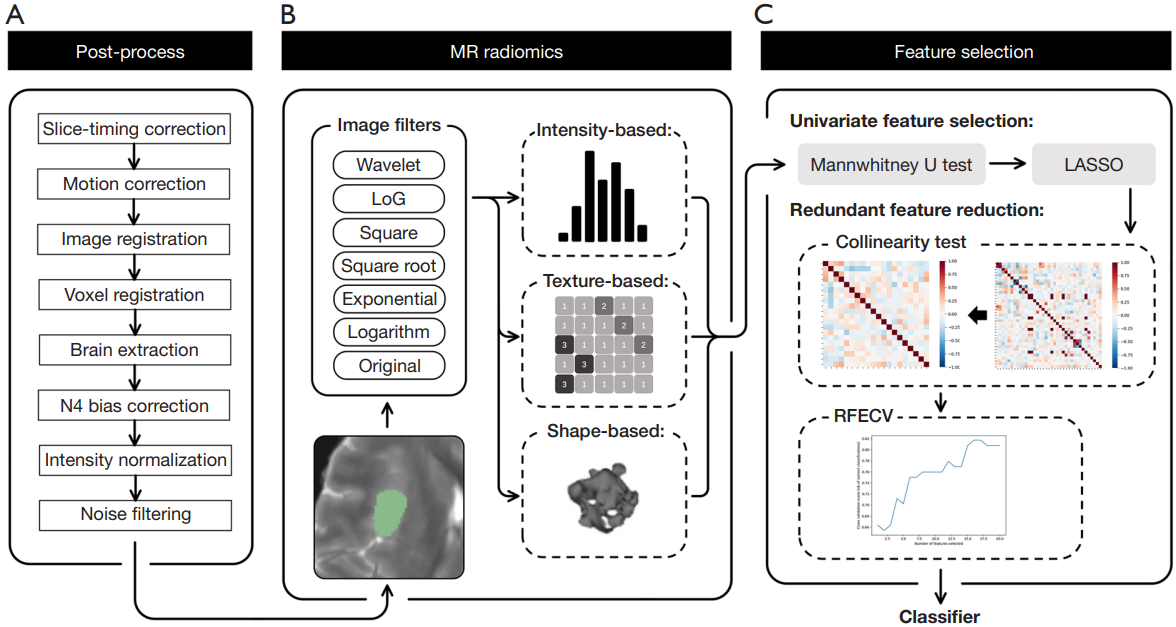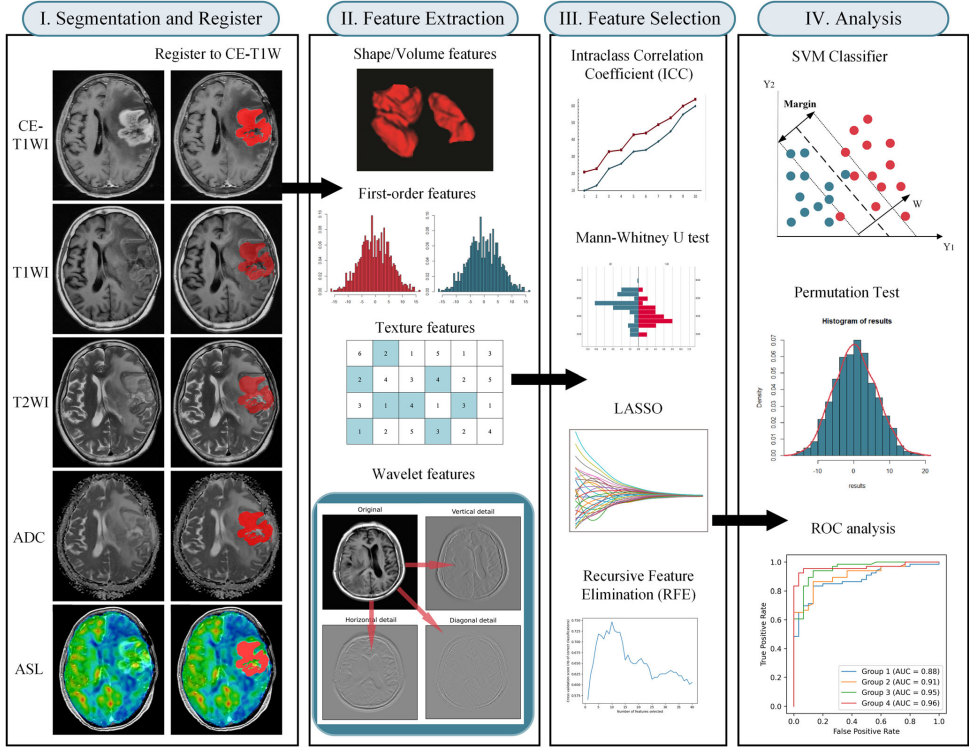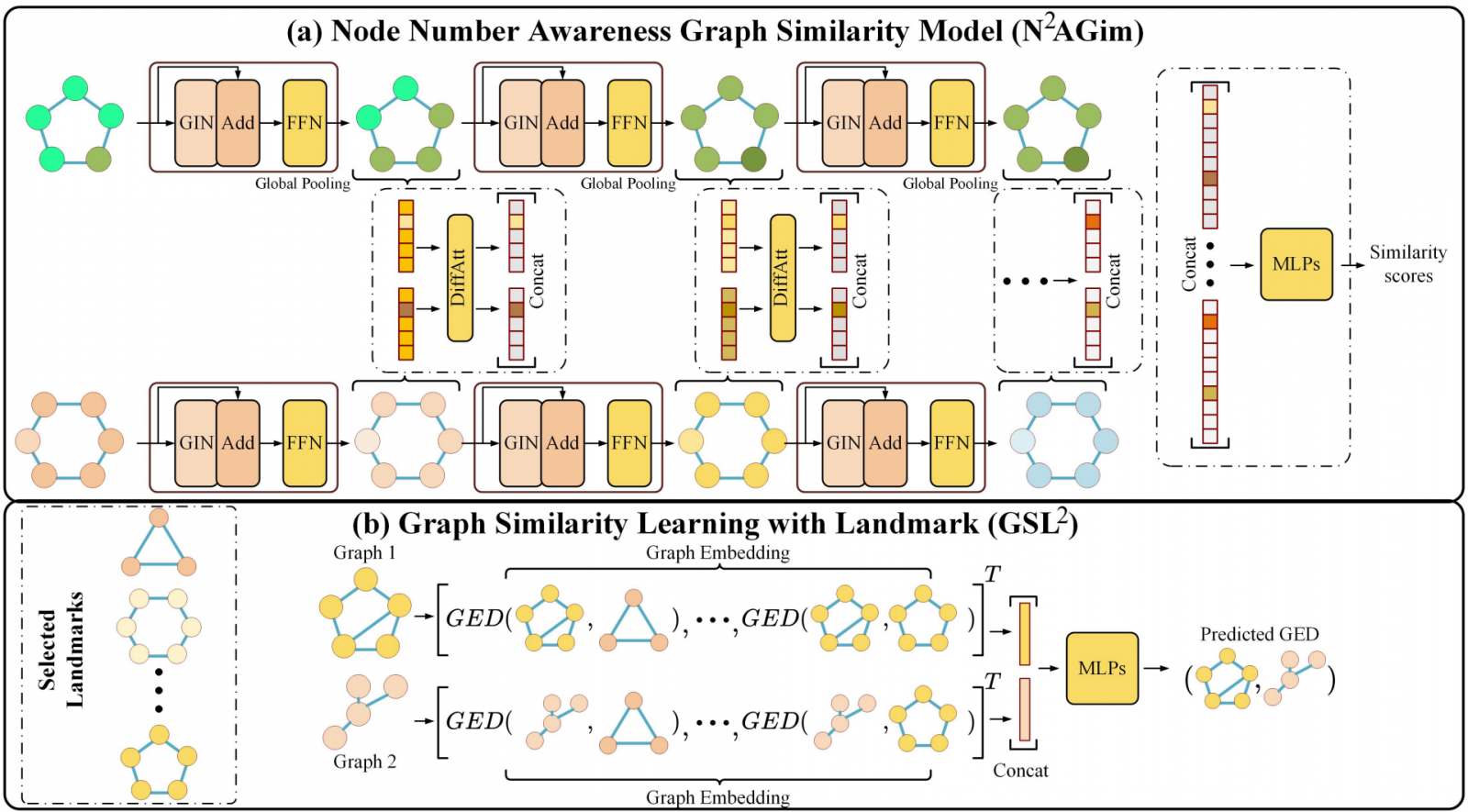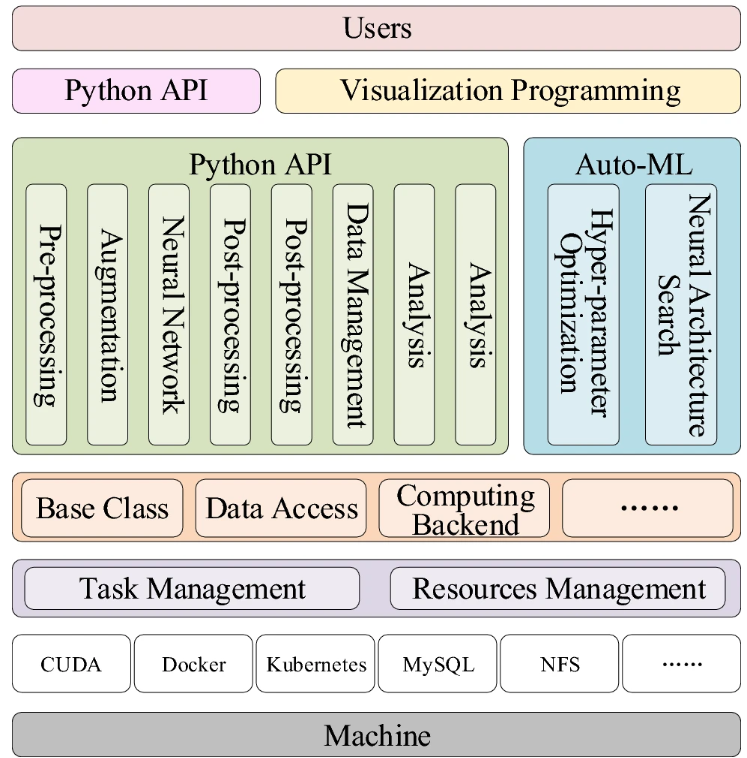张亮 教授 博士生导师 计算机科学与技术学院 博士硕士学科:软件工程 |
1. 可解释深度神经网络
2. 具身语义和认知理解
3. 计算机视觉图像处理
4. 人机融合共生互理解
5. 嵌入式深度网络优化
办公地点: 南校区网安大楼A1-628
电子邮件: liangzhang@xidian.edu.cn
1999.09 ~ 2003.07
浙江大学,测控技术及仪器,学士学位
2003.09 ~ 2009.09
浙江大学,仪器科学与技术,博士学位
2009.09 ~ 2011.06
西安电子科技大学,软件学院,讲师
2011.06 ~ 2020.06
西安电子科技大学,软件学院,副教授
2015.10 ~ 至今
西安电子科技大学,计算机科学与技术学院 嵌入式技术与视觉处理研究中心,主任
2016.12 ~ 2017.12
西澳大学,计算机科学与技术学院,研究访问学者
2020.06 ~ 至今
西安电子科技大学,计算机科学与技术学院,教授
西安电子科技大学嵌入式技术与视觉处理研究中心
西安电子科技大学嵌入式技术与视觉处理研究中心(XDU-ETVP),成立于2015年10月。研究中心依托于原西电软件学院大数据技术和嵌入式系统实验室基础成立,重点关注深度学习技术、人机自然交互技术、机器人复杂场景中环境感知与场景理解、深度网络可解释性等热点研究方向。研究中心目前教授副教授6人、兼职教授5人,具有博士硕士研究生60余人,同国内外知名研究机构帝国理工大学、慕尼黑工业大学、UCLA、清华大学、北京大学、国防科技大学、浙江大学等形成了深入的合作关系。团队已经毕业研究生200余名,主要在各大互联网企业及国家重点研究机构,多名同学赴国内外知名研究机构进行博士深造。
2016年12月,实验室获得西安电子科技大学首届“三好三有”导学团队荣誉称号(全校仅6支);
2025.07.01,恭喜实验室论文“PD-NeRF : A General Pseudo-Depth Supervision Method for Neural Radiance Fields”被中国科学 SCIENCE CHINA Information Sciences接收,祝贺谷佳明、蒋敏超两位同学。
2025.06.26,恭喜实验室论文“Intervening in Black Box: Concept Bottleneck Model for Enhancing Human Neural Network Mutual Understanding”和“VoteSplat: Hough Voting Gaussian Splatting for 3D Scene Understanding”被ICCV 2025接收,祝贺熊诺晔、蒋敏超两位同学。
2024.07.03,恭喜实验室论文
2024.06.15,恭喜实验室论文
2022年,实验室多名老师荣获陕西省科技进步二等奖;
► 团队每年硕士研究生名额15名左右,保研名额10名;博士研究生名额3-5名。
欢迎对可解释性深度神经网络构建,3D场景理解,3DGS渲染重建,空间智能及医学人工智能交叉等领域感兴趣的同学积极联系,2026研究生夏令营保研已开始。导师联系方式:liangzhang@xidian.edu.cn
1、博士研究生招生情况
-
计算机科学与技术学院:博士,每年2-3人;工程博士,每年2-3人,2026博士名额欢迎提前联系、交流。
2、硕士研究生招生情况
-
计算机科学与技术学院:工学硕士,每年8-10人
-
计算机科学与技术学院:工程硕士,每年6-8人(包括青岛研究院、广州研究院等)
3、期望你
-
英语基础较好(CET-6或者雅思、托福等),听说读写
-
认真踏实,有较强的抗压能力,希望致力于深度学习基础技术、人机互理解网络设计、场景认知理解等技术
-
有竞赛获奖或项目经验,优先考虑
2025
| Nuoye Xiong, Ning Wang, Hongsheng Li, Guangming Zhu, Liang Zhang*, Syed Afaq Ali Shah, Mohammed Bennamoun Neurocomputing(IF=6.0) |
2024
| RLAD: A Reliable Hippo-guided Multi-task Model for Alzheimer\\\\\\\\\\\\\\\\\\\\'s Disease Diagnosis Zhenxin Lei, Wenjing Zhu, Jiale Liu, Cong Hua, Johann Li, Syed Afaq Ali Shah, Liang Zhang*, Mohammed Bennamoun IEEE JOURNAL OF BIOMEDICAL AND HEALTH INFORMATICS(IF=6.7) |
| Daily DVS-200: A Comprehensive Benchmark Dataset for Event-Based Action Recognition Qi Wang, Zhou Xu, Yuming Lin, Jingtao Ye, Hongsheng Li, Guangming Zhu, Syed Afaq Ali Shah, Mohammed Bennamoun, Liang Zhang* European Conference on Computer Vision(ECCV 2024,CCF B) |
| Language Model Guided Interpretable Video Action Reasoning Ning Wang, Guangming Zhu, Hongsheng Li, Liang Zhang*, Syed Afaq Ali Shah, Mohammed Bennamoun The IEEE/CVF Conference on Computer Vision and Pattern Recognition 2024(CCF A类) |
| Scene Graph Generation: A comprehensive survey |
| The two-way knowledge interaction interface between humans and neural networks |
| Image classification network enhancement methods based on knowledge injection |
| Content-Conditioned Generation of Stylized Free hand Sketches |
| A multimodal gesture recognition dataset for desktop human-computer interaction |
| Flowmind2Digital: The First Comprehensive Flowmind Recognition and Conversion Approach |
2023
| Enhance Sketch Recognition\\\\\\\\\\\\\\\\\\\\'s Explainability via Semantic Component-Level Parsing Guangming Zhu, Siyuan Wang, Tianci Wu, Liang Zhang* The 38th Annual AAAI Conference on Artificial Intelligence 2024 (CCF A类) |
| A systematic collection of medical image datasets for deep learning |
| Position and structure-aware graph learning |
| Sketch Input Method Editor: A Comprehensive Dataset and Methodology for Systematic Input Recognition |
| UE4-NeRF: Neural Radiance Field for Real-Time Rendering of Large-Scale Scene |
| Predicting isocitrate dehydrogenase genotype, histological phenotype, and Ki-67 expression level in diffuse gliomas with an advanced contrast analysis of magnetic resonance imaging sequences |
| Exploring Hierarchical Spatial Layout Cues for 3D Point Cloud based Scene Graph Prediction |
| Diffusion-weighted imaging and arterial spin labeling radiomics features may improve differentiation between radiation-induced brain injury and glioma recurrence |
| Exploring Spatio-Temporal Graph Convolution for Video-based Human-Object Interaction Recognition |
| 3D Spatial Multimodal Knowledge Accumulation for Scene Graph Prediction in Point Cloud |
2022
| Spatial Parsing and Dynamic Temporal Pooling networks for Human-Object Interaction detection Hongsheng Li, Guangming Zhu, Wu Zhen, Lan Ni, Peiyi Shen, Liang Zhang*, Ning Wang, Cong Hua 2022 International Joint Conference on Neural Networks (IJCNN)(CCF C类) |
| Node Number Awareness Representation for Graph Similarity Learning |
| MEDAS: an open-source platform as a service to help break the walls between medicine and informatics |
| Learning From Pixel-Level Noisy Label: A New Perspective for Light Field Saliency Detection |
►实验室更多成果信息请点击这里查看。
- IEEE 会员
- 中国计算机学会(CCF)会员
- 入选 “ 西安电子科技大学华山学者菁英计划 ”
- 科技部重点研发计划评审专家
- 上海市科委项目评审专家
- TPAMI (Transactions on Pattern Analysis and Machine Intelligence)审稿人,SCI,I区期刊
- Signal Processing : Image Communication,审稿人,SCI,III区期刊
- CVPR 2017 审稿人,A 类国际会议,计算机视觉领域顶会
- CVPR 2018 审稿人,A 类国际会议,计算机视觉领域顶会
- ECCV 2018 审稿人,B 类国际会议,计算机视觉领域顶会
- Journal of Applied Mathematics 期刊,编辑





